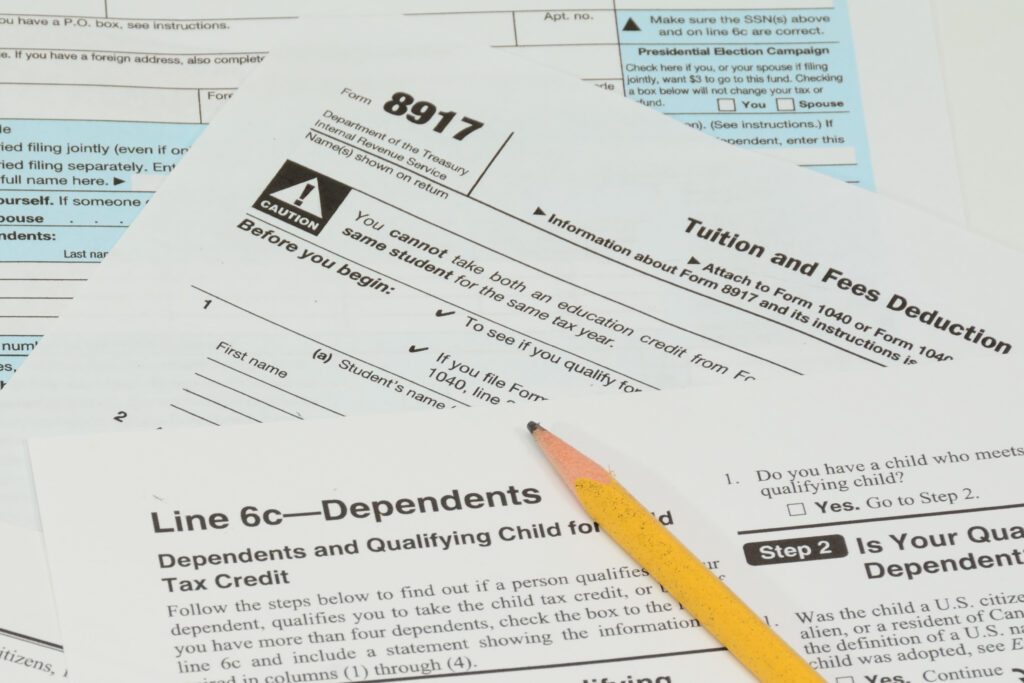Paying for college is one of the biggest challenges facing students and families in 2025, and it seems like the steep costs just keep climbing. Yet according to the National Center for Education Statistics, more than 85% of full-time undergraduate students in the US receive some kind of financial aid each year. How do they do it? If you’d like to join that educated majority, then understanding how financial aid works is an essential first step to making college affordable.
For starters, did you know that only two forms dominate the college financial aid landscape?
The twin powerhouses you’ll need to know to land college funds are the Free Application for Federal Student Aid (FAFSA) and the CSS Profile. In fact, the information you put on these two forms alone determines how much financial support you can receive from federal, state, and institutional sources. And while they both collect detailed information about your family’s finances to make this life-changing determination, they serve different purposes and can have markedly different outcomes.
We hardly need to tell you that the stakes are high at this particular table. Submit the wrong form, miss a deadline, or leave out important information, and you could lose access to thousands of dollars in aid programs. Thankfully, there are resources to help you do it right. This guide breaks down the FAFSA and CSS Profile differences and gives you practical strategies for getting the most financial aid available. Today, we’ll learn how to maximize your eligibility for grants, scholarships, and loans!
What is the FAFSA?
The Free Application for Federal Student Aid, more commonly referred to as “the FAFSA,” is the bedrock foundation of most students’ financial aid packages. It determines your eligibility for federal grants, work-study opportunities, and student loans. Not to mention, many states and colleges also use the FAFSA data to award additional financial aid as well.
Who should submit a FAFSA?
Believe it or not, it’s recommended for nearly every college-bound student. Even if your household income is high, you may still qualify for non-need-based aid, state grants, or institutional scholarships.
What do you need to fill it out?
Before starting, you’re going to want to gather the following materials. Trust us, it will make your life a lot easier:
- Social security numbers (for students and parents/guardians)
- Federal tax returns, W-2s, and records of untaxed income
- Bank statements and records of investments
- FSA ID (used to sign in electronically when you create your account)
Though the release was delayed last year due to the rollout of a new filing format, for the 2025-2026 academic year, the FAFSA form is expected to open on October 1, 2025. Whenever it becomes available, we’d recommend filling it out and completing the forms as soon as possible. The most important reason for this is that some states and schools award aid on a first-come, first-served basis, which means filing late could leave you with significantly less.
Types of aid the FAFSA unlocks for you:
Why bother? Submitting this important document puts you in the running for all of the following sources of financial aid.
- Pell Grants (need-based aid that does not need to be repaid)
- Federal Supplemental Educational Opportunity Grants (FSEOG)
- Federal work-study programs
- Direct subsidized and unsubsidized loans
- PLUS loans for parents

What is the CSS Profile?
The CSS Profile — administered by education titan College Board, of SAT and AP test fame — digs deeper into a family’s financial picture to help schools award their own institutional aid. Unlike the FAFSA, which is free, the CSS Profile does have fees; they charge $25 for the first school and $16 for each additional submission. Fee waivers are available for income-eligible families.
Who requires the CSS Profile?
Some institutions do not use the FAFSA and only accept the CSS, and vice versa. Check your college list to see which require the CSS. These are primarily private colleges and universities, as well as some highly selective public schools. Examples include the Ivy League schools such as Harvard, Yale, and Brown, as well as top liberal arts colleges like Amherst, Williams, and Pomona.
What do you need to fill it out?
If you’ve already gathered the materials for your FAFSA, you’re in a good starting place. What else will you need?
- More detailed income and asset data, including home equity and retirement savings
- Information from noncustodial parents (if applicable)
- Records of family businesses or farms
- Projected income for the upcoming year
The additional information allows schools to use more data to create their financial aid offers. Some families may find that their CSS Profile aid package is higher than what FAFSA alone would provide, particularly at schools with generous endowments.
Here’s a short, 1-minute rundown of how these two services differ from one another:
Key differences between FAFSA and CSS Profile
Perhaps the most common misconception about financial aid is that the FAFSA and the CSS Profile are interchangeable. In reality, they differ significantly in purpose, process, and outcomes. You might need to fill out one, both, or neither!
Here’s an easy comparison at a glance:
| Category | FAFSA | CSS Profile |
| Costs to file | $0 (Free) | $25 for the first school, $16 per additional school |
| Aid types covered | Federal, state, and some college aid | College aid only |
| Number of schools | A single form for multiple schools | Separate submission for each school |
| Data considered | Income, limited assets | Detailed finances, home equity, business value |
| Methodology | Federal methodology | Institutional methodology |
| Dates depend on | Federal and state deadlines | Individual school deadlines |
One of the biggest differentiating factors? Because CSS Profile includes assets like home equity and business ownership, your calculated contribution may differ from FAFSA’s Student Aid Index (SAI). For some families, this means aid packages can vary significantly from one school to another.
If you’re more of a visual learner, this video walks you through the main points you’ll need to understand and remember:
When to complete each form
Timing is truly everything when it comes to financial aid — and you simply can’t expect second chances if you miss a deadline. Failing to submit on time means you jeopardize your eligibility for institutional aid or state-specific grants.
FAFSA timeline:
State and school deadlines may vary, but as you now know, filing early can unlock priority aid. The latest you can submit a FAFSA is June 30th, following the year you attended school. All these dates can get a little confusing, so here’s a reference to make sure you’re filling out the right form:
| You attended school… | Fill out this FAFSA: | Using this year’s income and tax info: | Final submission deadline: |
| Summer/Fall ‘24 – Spring ‘25 | 2024 – 2025 FAFSA | 2022, filed in 2023 | June 30th, 2025 |
| Summer/Fall ‘25 Spring ‘26 | 2025 – 2026 FAFSA | 2023, filed in 2024 | June 30th, 2026 |
CSS Profile timeline:
Deadlines vary by institution, often earlier for Early Decision and Early Action applicants. Some schools require CSS Profile submission in the fall of a student’s senior year.
Worried that you’re falling behind? Download Empowerly’s student checklists for each grade year to make sure you’re staying on top of everything you need to complete.
- 2025 Student Checklist: Freshman (9th Grade) Edition
- 2025 Student Checklist: Sophomore (10th Grade) Edition
- 2025 Student Checklist: Junior (11th Grade) Edition
- 2025 Student Checklist: Senior (12th Grade) Edition
What happens after you file?
Once you submit the FAFSA or CSS Profile, here’s what typically happens.
- FAFSA: Keep an eye on the mail. You’ll receive a Student Aid Report (SAR) that summarizes your application and provides your Student Aid Index (SAI) — a number colleges will use to determine your federal aid eligibility.
- CSS Profile: Each school receives your data and uses it to calculate your institutional aid offer based on its own formula.
Tips for maximizing financial aid
Want to ensure you get the most financial aid possible? Of course you do! Here’s how:
- Apply early. We’ve said it before, and we’ll say it again. Both the FAFSA and the CSS Profile award some of their assistance on a first-come, first-served basis, and your application holds your spot in line.
- Double-check for errors. A wrong digit in your Social Security number or a missing signature can not only lead to processing delays, but your form might even get rejected or audited. Save yourself the headache and check it twice.
- Make use of the IRS Data Retrieval Tool for the FAFSA. This helps import tax data directly, reducing mistakes (and your workload — yes please).
- Review each of your school’s financial aid policies for the final word. Some may ask for supplemental forms or unique documentation.
- Appeal if your circumstances change. Job loss, medical expenses, or other financial changes may qualify you for more help. If this happens to you, submit a formal appeal with documentation of what changed.
- Reapply every year. Financial aid eligibility is reassessed annually, and filing again ensures you keep receiving aid.

Common mistakes you can now avoid:
- Submitting the wrong year’s form
- Missing school-specific deadlines (they may differ from federal ones)
- Leaving fields blank instead of entering “0”
- Forgetting to include noncustodial parent info
- Skipping the FAFSA because “we make too much money”
Instead, you can do this the right way.
Your bottom line
Yes, the FAFSA and CSS Profile are both critical parts of the financial aid process, but they serve different purposes. FAFSA is your gateway to federal and state aid, while CSS Profile helps colleges determine how much institutional aid you may qualify for. Completing both forms — on time and with accurate information — gives you the best chance at making college affordable.
Our best tip? Don’t wait until deadlines are looming. Start organizing your financial documents now and prepare to submit as soon as possible after applications open.
Need help navigating these forms or understanding how aid packages are calculated? Empowerly’s team of expert counselors can guide you every step of the way so you don’t leave any money on the table. Schedule a consultation today and take control of your financial future.
